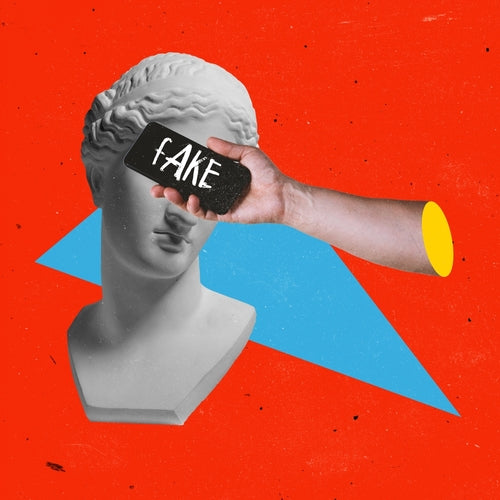Many of us find it galling when we see people shamelessly rip off the hard work of other artists. But before you give way to outrage, there are a few things to consider that may not be immediately obvious.
-
You can’t copyright a style or idea.
“Copyright protects particular works, NOT the ideas, information, styles or techniques ...
“However, if another artist’s use of your distinctive style means that people confuse that artist with you, you may be able to take legal action under the law of passing off or consumer protection legislation.
“For copyright infringement to occur, there must be not only a similarity between the two works but also a causal link (i.e. some evidence that other person actually copied your work).”
-
Your work is automatically protected by copyright.
You do not need to watermark your images or use copyright symbols to assert your rights. Lawyers sometimes suggest you do – but they are not trying to sell art.
Websites and images studded with copyright warnings are a turn-off to buyers and will likely make you look like a suspicious crank.
-
Artists have always influenced each other.
Look at how the Impressionists built on each other’s work, copying paintings and trying out their ideas. Vincent Van Gogh, one of the most original artists the world has seen, made it a regular habit to copy the work of artists he admired – always translating it into his own style.
There is very little in the world of art that is genuinely new, but there are brilliant variations on existing styles, compositions, techniques and subjects that can blow our minds.
-
Appropriation has a history of acceptance in art
Appropriation is the use of pre-existing objects and images in art, from Marcel Duchamp’s “readymade” sculptures using bicycle wheels and a urinal to Andy Warhol’s adoption of other people’s images.
This method is not without its risks. Warhol and his estate have lost a series of court cases brought by the original creators. But it is said that the manufacturer of Campbell’s Soup tolerated his use of their brand because it was good publicity.
In the most recent successful case against the Warhol estate, involving a photo of the musician Prince, one of the judges explains why the soup can use was acceptable:
“The purpose of Campbell’s logo is to advertise soup. Warhol’s canvases do not share that purpose,” Justice Sotomayor wrote. “Rather, the soup cans series uses Campbell’s copyrighted work for an artistic commentary on consumerism.”
-
Your ethics around originality and ownership are yours alone.
Everyone has their own morality framework, which means that practises you find outrageous may not bother someone else. However, it is never acceptable to make a facsimile of someone’s work and pass it off as your own – and it is even worse to sell it.
It is important to remember that the law is sometimes an ass and may not protect your rights the way you feel it should. Legal action may also produce perverse results (such as the successful case against Men At Work for sampling a part of a children’s nursery rhyme).
-
What is legal and what is ethical are two different things.
Just because it is legal to do something doesn’t mean you SHOULD do it. If you are seen as unethical in your practise, it will damage your reputation among artists, galleries and buyers. A public scandal will be hard to recover from.
-
If you have been sinned against, here’s what you can do.
You can ask the artist nicely to stop copying, give them a deadline to respond and send a cease and desist letter if they ignore you. Templates for such letters are available online.
Ensure you have a strong case, or you may be liable for a defamation claim. Gather your evidence and get advice from any galleries that you work with and, perhaps, a lawyer.
Clueless hobbyists on social media may have no idea about the concept of intellectual property. Think about whether the work of potential imitators is really going to do you harm – it may be better to keep concentrating on your own evolution and ensure your work is always superior.
8. If you have been unjustly accused …
Reply immediately and ask for time to respond. Gather evidence to show how long you have been doing the thing you have been accused of copying and be able to show how you developed the idea.
If you work with a gallery, get some advice. They may handle the dispute for you. You may need to get some legal advice. Take care of yourself. This would be a distressing episode.
Resources:
Australian Copyright Council. Artists and Copyright.
https://www.copyright.org.au/browse/book/ACC-Artists-&-Copyright-INFO033/
Infringement: What Can I Do?
https://www.copyright.org.au/browse/book/ACC-Infringement:-What-Can-I-Do-INFO052
Infringement: Actions, Remedies, Offences and Penalties
National Association for the Visual Arts. Legal and Copyright Guides.
https://visualarts.net.au/guides/category/157
Arts Law Centre of Australia.
https://www.artslaw.com.au/information-sheet/copyright-infringement/
What to do if accused.
https://www.plagiarismtoday.com/2023/05/09/what-to-do-if-youre-falsely-accused-of-plagiarism/
